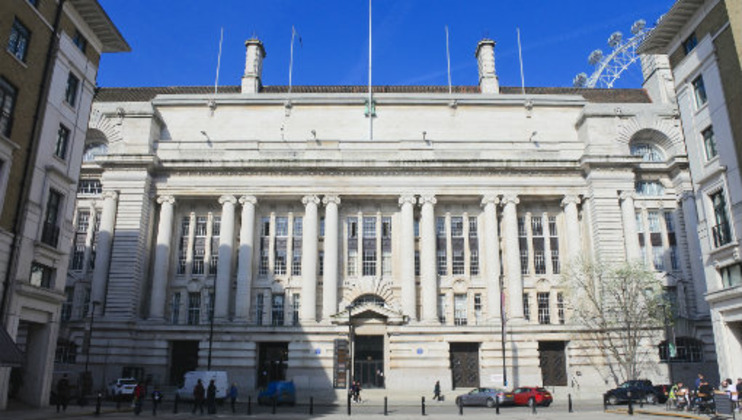County Hall

London County Hall was built in 1911 by the architect Ralph Knott and served as the headquarters of the Greater London Council for 64 years. Knott designed the six-storey building in a spectacular Edwardian Boroque style and construction took 11 years, largely due to disruption during the First World War, in which Knott designed several Royal Air Force bases.
The building was officially opened in 1922 by King George V, with further construction of the building continuing into the 1930s. Air raid damage occurred throughout the Second World War, resulting in further construction work continuing until 1956.
London County Hall was the home of the Greater London Council until 1986, when the government abolished the council. After the GLC left London County Hall, it remained largely unused until the mid-1990s, when plans were put in place for London County Hall to be converted to an entertainment and residential complex, with a mixture of attractions, restaurants and hotels. The octagonal Council Chamber sits at the centre of County Hall, and provided seating for over 200 council members and four galleries overlooking the Chamber for the public and members of the press.
Facilities
There are several bars serving a range of alcoholic and non-alcoholic beverages, as well as snacks and ice creams. The venue has partnered with Tarquin's Gin for its cocktails and ice cream is provided by Marshfield Farms.
Accessibility
For full accessibility information please visit the website: Access
London County Hall is currently home to Agatha Christie's Witness For The Prosecution until 26 April 2026
Venue details
- Address:
- County Hall
- County Hall
- SE1 7PB
- Transport:
- Waterloo, Embankment, Charing Cross and Westminster stations, with access to National Rail services and District, Circle, Jubilee, Northern and Bakerloo lines on London Underground. Bus routes to County Hall include the no. 211, 77 and 381